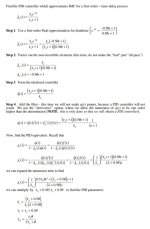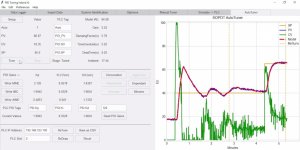Peter Nachtwey
Member
Some of those rules cannot be justified. I have shown the calculation many times before.There are rule based gains, and then I have a selector that allows for optimisation of the gains for PI or PID. Also it can optimise between Overshoot or Minimum ITAE, and whether you want PvT or not.
I have derived the FOPDT and SOPDT gains using pole placement and IMC method.
I don't see pole placement.
The IMC method does not generate a derivative time constant for FOPDT systems.
Whereas in reality the SOPDT will be a closer representation and will preform better, and does when tested.






